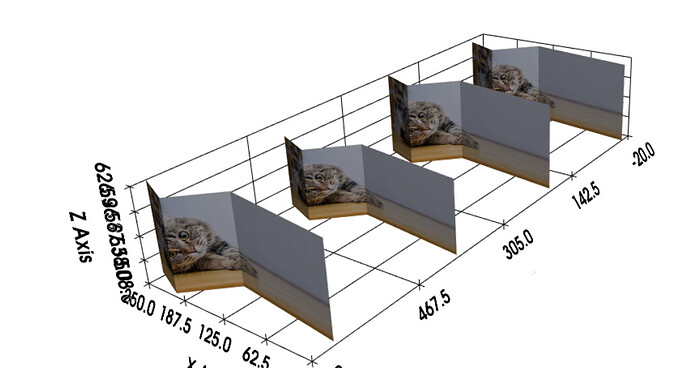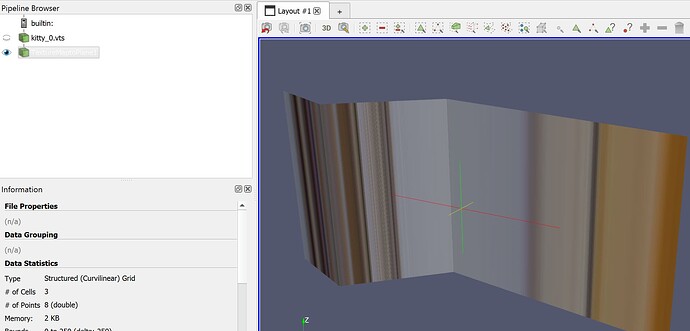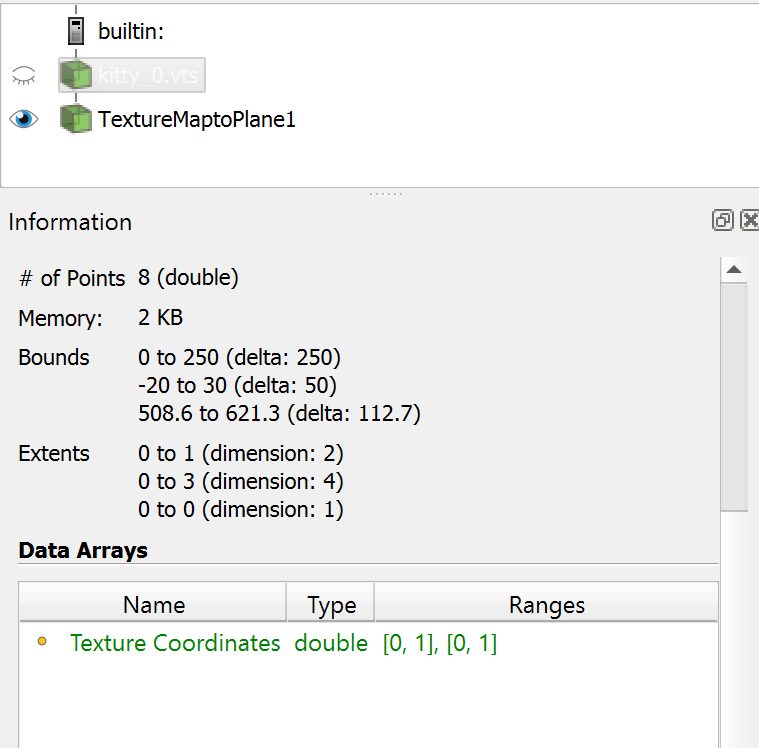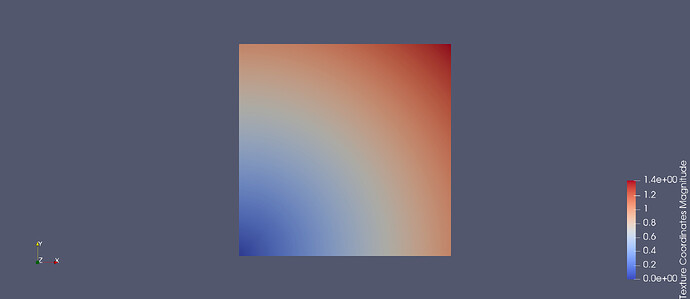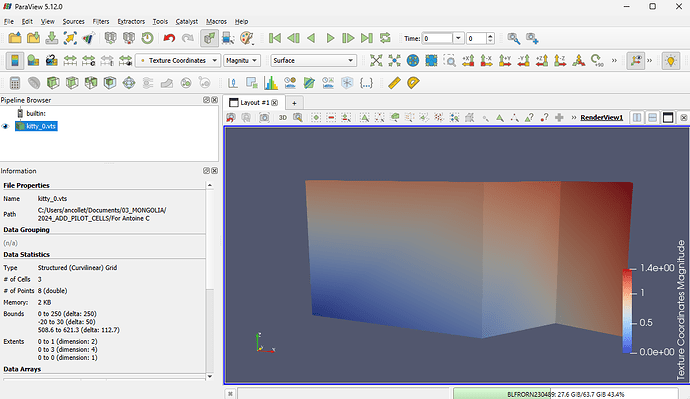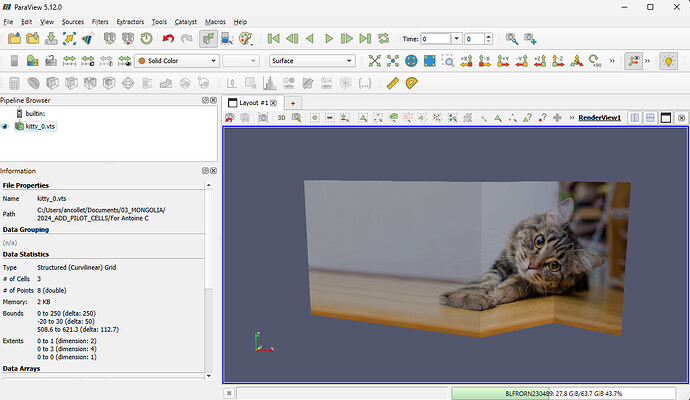Hi there,
I try to visualize geological cross sections using Paraview. For this, I create a *.vts using pyvista and then use the filter textureMaptoPlane. In the following I will give you an example with pyvista, and then show you my issue in Paraview.
I will use the this free image from the web for the demonstration:
- Creation of the cross-section support from pyvista:
from pathlib import Path
import numpy as np
import pyvista as pv
from numpy.typing import ArrayLike
def make_cross_section_surface(
section_xy_sequence: ArrayLike, section_z_min: float, section_z_max: float) → pv.StructuredGrid:
""" Make a structured grid as a 3D support for a geological cross section. Parameters ---------- section_xy_sequence : ArrayLike Coordinates x-y of the points defining the cross section surface line. section_z_min : float Minimum value of the cross section on the z-axis. section_z_max : float Maximum value of the cross section on the z-axis. Returns ------- Tuple\[pv.StructuredGrid, np.typing.NDArray\[np.float64\]\] A pyvista stuctured grid with embedded texture coordinates that can be exported and saved as a \*.vts for vizualization in Paraview. """ \# --- Step 1: Define the surface grid in 3D space --- \_section_xy_sequence = np.asarray(section_xy_sequence) n_points = \_section_xy_sequence.shape\[0\] n_z = 2 # bottom and top of the section \# Create grid coordinates X = np.tile(\_section_xy_sequence\[:, 0\], (n_z, 1)) Y = np.tile(\_section_xy_sequence\[:, 1\], (n_z, 1)) Z = np.vstack(\[np.full(n_points, section_z_min), np.full(n_points, section_z_max)\]) \# --- Step 2: Create structured grid (rectangular surface) surf = pv.StructuredGrid(X, Y, Z) \# --- Step 3: Define texture coordinates --- \# u varies along the section (0 to 1) \# v varies vertically (0 to 1) u = np.linspace(0, 1, n_points) v = np.linspace(0, 1, n_z) uu, vv = np.meshgrid(u, v) \# Flatten in the same order as the structured grid’s points uv = np.c\_\[uu.flatten(order="F"), vv.flatten(order="F")\] \# Embed the texture coordinates surf.active_texture_coordinates = uv return surf
Here is an example where I plot 4 cross sections. Everything works like a charm with pyvista:
# Test
image_path = “kitty.jpg”
xy = np.array([[0.0, 0.0], [150.0, -20], [200, 30.0], [250, 10.0]])
xy_seq = [
xy, xy + np.array(\[0.0, 200.0\]), xy + np.array(\[0.0, 400.0\]), xy + np.array(\[0.0, 600.0\]),]
z_min_seq = [508.6, 513.6, 512.7, 513.6]
z_max_seq = [621.3, 626.3, 606.3, 626.3]
texture = pv.read_texture(image_path)
plotter = pv.Plotter()
for i, (section_xy_sequence, section_z_min, section_z_max) in enumerate(zip(
xy_seq, z_min_seq, z_max_seq)):
\# Make the cross section cross_section_surf = make_cross_section_surface( section_xy_sequence, section_z_min, section_z_max ) \# save the image cross_section_surf.save(Path(image_path).stem + f"\_{i}.vts") \# Add to the plotter plotter.add_mesh(cross_section_surf, texture=texture)plotter.show_grid()
plotter.show()
This is what you have:
Now when I try to load the *.vts in Paraview and use the textureMaptoPlane filter, things got messed up:
Theoretically, it should work fine because the texture coordinates are embedded in the vts…
Still, it seems that I have to play with the properties:
So two questions:
- Why does the “automatic” mode messes up ?
- How should I fill Point1 and Point2 in my case ?
I looked for more than one hour on the web and did not found the answer….
Thank you in advance for the help.
Antoine COLLET

